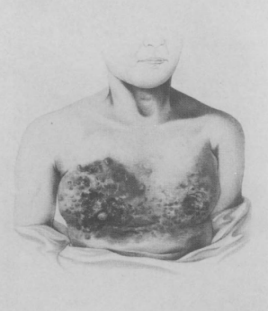Analysis and Classification of Breast Cancer Disease Via Different Datasets and Classifier Models
Main Article Content
Abstract
Nowadays, Tumour is one of the important reasons of human death worldwide, producing about 9.6 million people in 2018. BC (breast cancer) is the common reason for cancer deaths in females. BC is a type of cancer that can be treated when detected early. The main motive of this analysis is to detect cancer early in life using ML (machine learning) techniques. The features of the people included in the WDBC (Wisconsin diagnostic breast cancer) and Coimbra BC datasets were classified by SVOF-KNN, KNN, and Naïve Bayes techniques. The pre-processing data phase was applied to the datasets before classification. After the data pre-processing steps, three classification methods were applied to the data. Specificity and Sensitivity rates were used to calculate the success of the techniques. As an outcome of the BC diagnosis classification, the SVOF-KNN technique was found with a 91 percent specificity rate and 90 percent sensitivity rate. When the outcomes attained from feature extraction and selection are calculated. It is seen that feature extraction, selection, and data pre-processing techniques improve the specificity and sensitivity rate of the detection system.
Article Details
References
De Moulin, D. (2012). A short history of breast cancer. Springer Science & Business Media.
Miller, K. D., Siegel, R. L., Lin, C. C., Mariotto, A. B., Kramer, J. L., Rowland, J. H., ... & Jemal, A. (2016). Cancer treatment and survivorship statistics, 2016. CA: a cancer journal for clinicians, 66(4), 271-289.
Alzubaidi, L., Al-Shamma, O., Fadhel, M. A., Farhan, L., Zhang, J., & Duan, Y. (2020). Optimizing the performance of breast cancer classification by employing the same domain transfer learning from hybrid deep convolutional neural network model. Electronics, 9(3), 445.
Sharma, G. N., Dave, R., Sanadya, J., Sharma, P., & Sharma, K. (2010). Various types and management of breast cancer: an overview. Journal of advanced pharmaceutical technology & research, 1(2), 109.
Claus, E. B., Schildkraut, J. M., Thompson, W. D., & Risch, N. J. (1996). The genetic attributable risk of breast and ovarian cancer. Cancer: Interdisciplinary International Journal of the American Cancer Society, 77(11), 2318-2324.
Narod, S. A., & Foulkes, W. D. (2004). BRCA1 and BRCA2: 1994 and beyond. Nature Reviews Cancer, 4(9), 665-676.
Ford, D., Easton, D. F., Stratton, M., Narod, S., Goldgar, D., Devilee, P., ... & Breast Cancer Linkage Consortium. (1998). Genetic heterogeneity and penetrance analysis of the BRCA1 and BRCA2 genes in breast cancer families. The American Journal of Human Genetics, 62(3), 676-689.
Frey, M. K., Sandler, G., Sobolev, R., Kim, S. H., Chambers, R., Bassett, R. Y., ... & Blank, S. V. (2017). Multigene panels in Ashkenazi Jewish patients yield high rates of actionable mutations in multiple non-BRCA cancer-associated genes. Gynecologic Oncology, 146(1), 123-128.
Monticciolo, D. L., Newell, M. S., Moy, L., Niell, B., Monsees, B., & Sickles, E. A. (2018). Breast cancer screening in women at higher-than-average risk: recommendations from the ACR. Journal of the American College of Radiology, 15(3), 408-414.
Kelemen, L. E., Couch, F. J., Ahmed, S., Dunning, A. M., Pharoah, P. D., Easton, D. F., ... & Vachon, C. M. (2008). Genetic variation in stromal proteins decorin and lumican with breast cancer: investigations in two case-control studies. Breast cancer research, 10(6), 1-11.
Muduli, D., Dash, R., & Majhi, B. (2020). Automated breast cancer detection in digital mammograms: A moth flame optimization based ELM approach. Biomedical Signal Processing and Control, 59, 101912.
Allugunti, V. R. (2022). Breast cancer detection based on thermographic images using machine learning and deep learning algorithms. International Journal of Engineering in Computer Science, 4(1), 49-56.
Kadam, V. J., Jadhav, S. M., & Vijayakumar, K. (2019). Breast cancer diagnosis using feature ensemble learning based on stacked sparse autoencoders and softmax regression. Journal of medical systems, 43(8), 1-11.
Aslam, M. A., & Cui, D. (2020, July). Breast cancer classification using deep convolutional neural network. In Journal of Physics: Conference Series (Vol. 1584, No. 1, p. 012005). IOP Publishing.
Aljuaid, H., Alturki, N., Alsubaie, N., Cavallaro, L., & Liotta, A. (2022). Computer-aided diagnosis for breast cancer classification using deep neural networks and transfer learning. Computer Methods and Programs in Biomedicine, 223, 106951.
Alzubaidi, L., Al-Shamma, O., Fadhel, M. A., Farhan, L., Zhang, J., & Duan, Y. (2020). Optimizing the performance of breast cancer classification by employing the same domain transfer learning from hybrid deep convolutional neural network model. Electronics, 9(3), 445.
Wang, H., Zheng, B., Yoon, S. W., & Ko, H. S. (2018). A support vector machine-based ensemble algorithm for breast cancer diagnosis. European Journal of Operational Research, 267(2), 687-699.
Sharma, D., Kumar, R., & Jain, A. (2022). Breast cancer prediction based on neural networks and extra tree classifier using feature ensemble learning. Measurement: Sensors, 24, 100560.
Adebiyi, M. O., Arowolo, M. O., Mshelia, M. D., & Olugbara, O. O. (2022). A Linear Discriminant Analysis and Classification Model for Breast Cancer Diagnosis. Applied Sciences, 12(22), 11455.
Samee, N. A., Alhussan, A. A., Ghoneim, V. F., Atteia, G., Alkanhel, R., Al-Antari, M. A., & Kadah, Y. M. (2022). A Hybrid Deep Transfer Learning of CNN-Based LR-PCA for Breast Lesion Diagnosis via Medical Breast Mammograms. Sensors, 22(13), 4938.
Amrane, M., Oukid, S., Gagaoua, I., & Ensari, T. (2018, April). Breast cancer classification using machine learning. In 2018 electric electronics, computer science, biomedical engineerings' meeting (EBBT) (pp. 1-4). IEEE.
Hu, Li-Yu, Min-Wei Huang, Shih-Wen Ke, and Chih-Fong Tsai. "The distance function effect on k-nearest neighbor classification for medical datasets." SpringerPlus 5, no. 1 (2016): 1-9
Thirumalaikolundusubramanian, P. (2018). Comparison of Bayes classifiers for breast cancer classification. Asian Pacific journal of cancer prevention: APJCP, 19(10), 2917.
Kanimozhi, G., Shanmugavadivu, P., & Rani, M. M. S. (2020). Machine Learning?Based Recommender System for Breast Cancer Prognosis. Recommender System with Machine Learning and Artificial Intelligence: Practical Tools and Applications in Medical, Agricultural and Other Industries, 121-140.
Borges, L. R. (1989). Analysis of the wisconsin breast cancer dataset and machine learning for breast cancer detection. Group, 1(369), 15-19.

